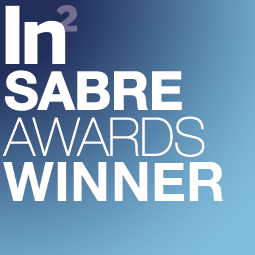Blog
Whether effective marketing has outright eluded your company or if you have an effective marketing strategy but you know it could be better, there is probably something very powerful you are missing — “Influencer Communications.” Also known as “Influencer Engagement,” this powerful marketing approach combines next-generation and traditional marketing methods and funnels them to and through purchasing influencers of various types. While you might not be leveraging influencers of any type right now, there is one that is walking your hallways, working at your desks, and sitting across from you in meetings. It’s your own employees.
Indeed, as traditional marketing chiefly relies on a sales and marketing team, Influencer Communications can harness the social power of the many other people and departments within your organization that have the ability to positively influence customers and help usher in new business. Due to their relationships and social media connections to potential customers, your executives, business development team, and anyone else in the company that helps drive day-to-day operations are directly or indirectly connected to your target audience. As such, the goal for Influencer Communications is to get everyone in your company involved in outreaching to your target audience. (read more)
According to 2016 research done by Pew Research Center, 62 percent of adults get their news on social media. Not only are social media sites Facebook, Twiiter, and Reddit being turned to for B2B news, the research also shows that users of sites like LinkedIn more actively seek out news as opposed to simply happening upon it; 51% of LinkedIn’s reported 450 million users actively seek out news on the platform. As news consumption is moving to social media, reported ClickZ, homepages become less important for readers, and that, “it’s OK to accept that the traffic is directed differently nowadays.” Coupled with findings from DMR showing the increase in LinkedIn member page views from 37 billion in Q4 2015 to 45 billion in Q1 2016, the writing is on the wall.
At the same time, there’s been a shift in how consumers feel about marketing messages from strangers versus those from trusted sources, or influencers. Collective Bias, a company specializing in influencing campaigns for brands and retailers, performed a recent study that underscored the value of influencer-based content. Results showed that consumers view content from influencers seven times longer than a digital display ad (two minutes, eight seconds versus 19.2 seconds). In short, consumers trust content from sources they trust. Thankfully, your organization is probably full of trusted influencers ready to be leveraged.
This might all feel overwhelming to a busy marketer, and yet all of these changes must be taken into consideration if you want your content to not just be consumed, but to also resonate. Luckily, this can be accomplished with the following 4 steps (continue reading)
When evaluating prospective service providers, ask: Whose cloud contact center software is that? Today Enghouse Interactive announced an enhancement to its Contact Center Service Provider (CCSP) solution, a provisioning portal. The portal can be used by service providers to ease the administrative tasks involved with provisioning cloud contact center tenants, and by end user customers to control day-to-day tasks like managing agent names, extensions, skill assignments, queues, routing rules, working hours, and holiday and operational calendars. One of the key differences between CCSP and other multi-tenant cloud contact center solutions on the market is that service providers purchase and deploy CCSP in their own data centers. The service provider, which could be a telco, cable company, VAR, or other type of technology reseller, purchases a fully supported product (in this case, CCSP) then creates a contact center as a service (CCaaS) offer.
This type of product is often called a "white label" solution as it allows the service provider to apply its own brand and identity to the CCaaS offer. The service provider often combines the CCaaS with other services, such as (continue reading)
Archives
- October 2019
- October 2018
- June 2018
- December 2017
- September 2017
- August 2017
- July 2017
- June 2017
- May 2017
- April 2017
- March 2017
- February 2017
- January 2017
- December 2016
- November 2016
- September 2016
- August 2016
- July 2016
- June 2016
- May 2016
- April 2016
- March 2016
- February 2016
- January 2016
- December 2015
- May 2014
- April 2014
- March 2014
- April 2013
- March 2013
- January 2013
- August 2012
- July 2012
- May 2012
- March 2012
- February 2012
- November 2011
- October 2011
- September 2011
- August 2011
- June 2011
- April 2011
- March 2011


















